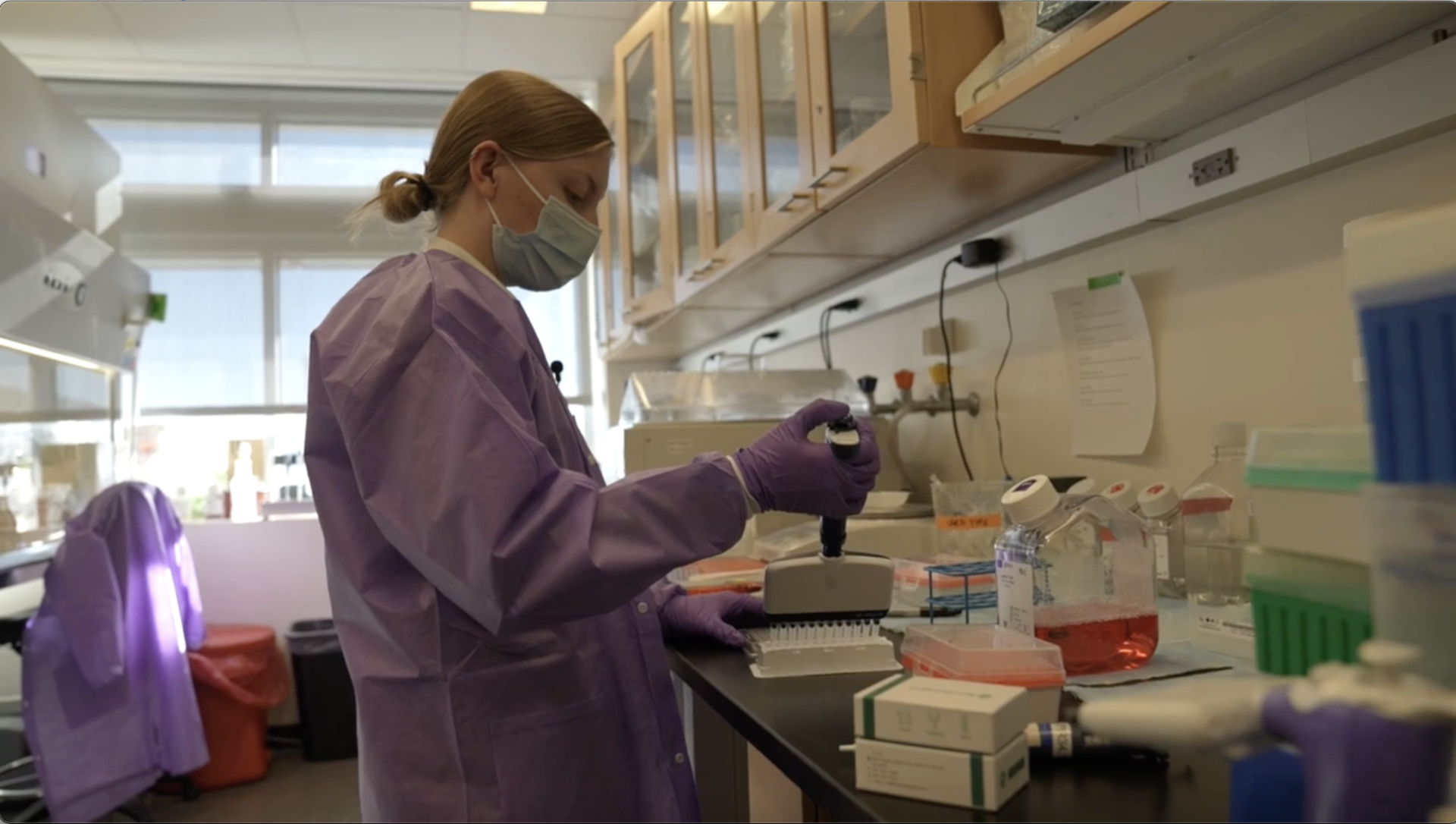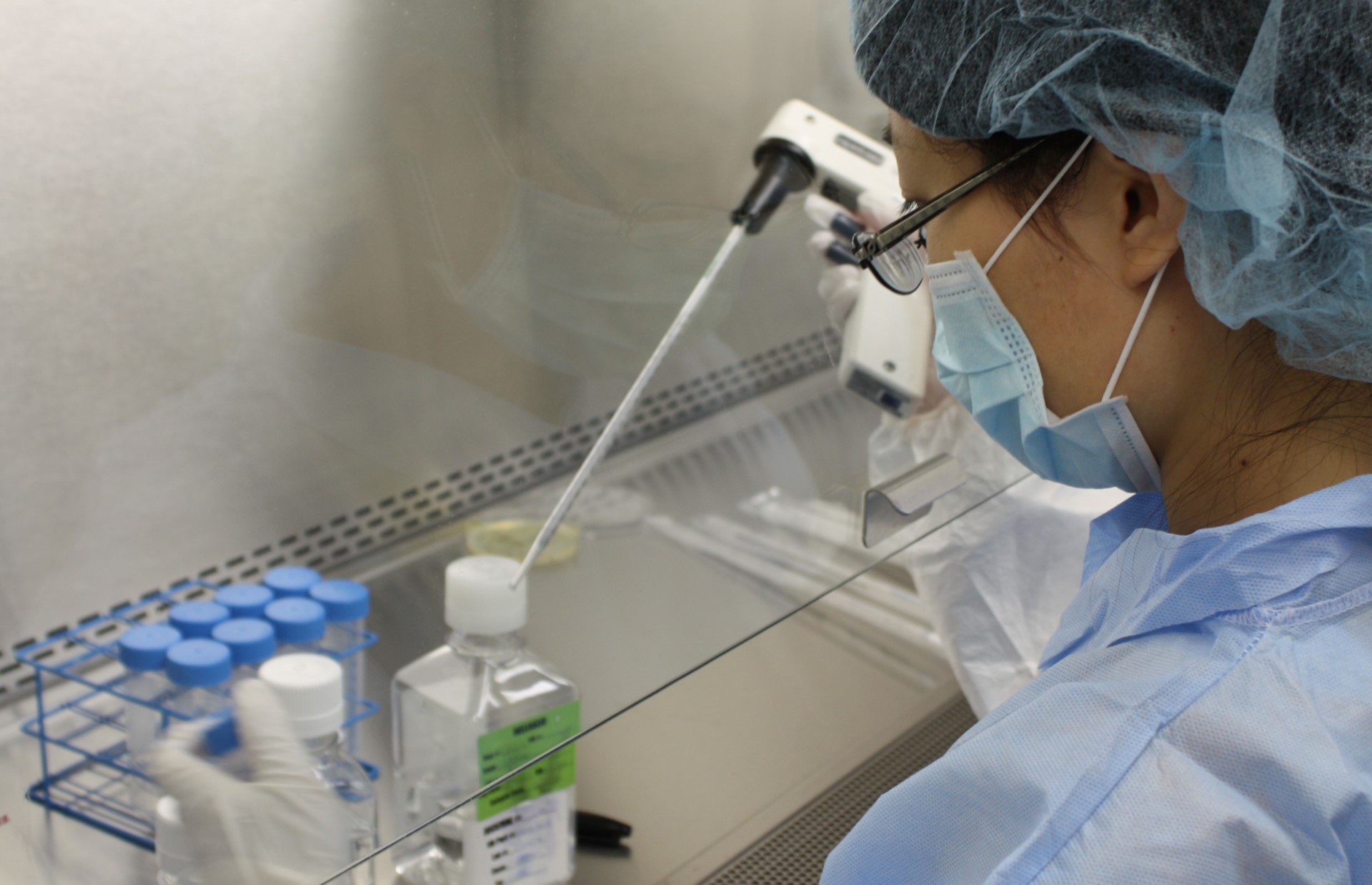Objectives and ambition
Many different influenza viruses circulate in nature and mutate constantly. Influenza types A and B infect humans; type A is responsible for many influenza epidemics and all influenza pandemics. The haemagglutinin (HA) and neuraminidase (NA) proteins on the surface of influenza viruses are the dominant antigens recognised by the immune system. HA consists of a distal “head” and a proximal “stalk” domain. Current vaccines are designed to elicit serum antibodies to the highly variable head of the HA proteins of specific influenza strains and generally lack efficacy against other strains. Neither a universal influenza vaccine that protects against all seasonal (epidemic) influenza strains and potential pandemic strains, nor a broadly cross-protective influenza vaccine is available. The effectiveness of available influenza vaccines depends on a match between the 3 or 4 specific seasonal influenza virus strains (or a single pandemic strain) in the vaccine and the strains in circulation.
The proposed FLUniversal approach has the potential to meet all the characteristics of the desired target product profile for a universal influenza vaccine. We aim for a pan-influenza vaccine providing protection against all influenza A virus subtypes and B virus lineages by prime-boost vaccination. Intranasal administration of our universal influenza vaccine provides convenience and, most importantly, near-immediate protection by inducing interferon and broadly cross-neutralising antibodies in the nasal passages (ref 3,4) and B- and T-cell-mediated systemic immunity.
The FLUniversal consortium unites world-leading experts with the tools and knowledge to develop novel universal influenza vaccine strategies and dissect the underlying protective immunological mechanisms. The parallel use of preclinical models, clinical trial samples, challenge study, and realworld samples enables the FLUniversal team to obtain synergy, de-risk the clinical development pathway, and identify signatures of protection through integrated complex immunological analyses.
Consequently, throughout the FLUniversal lifetime, the DeltaFLU vaccine and platform methodologies will be optimised through iterative, synergistic processes whereby preclinical and clinical data will be united to maximise output.
DeltaFLU serves to diversify the portfolio of vaccine candidates by the following features:
- Unique mode of action – DeltaFLU is the only influenza vaccine based on the deletion of the NS1 gene. This genetic modification results in the ability of DeltaFLU to induce interferon along with broadly cross-neutralising IgA antibodies in the nasal passages, rapidly generating protection at the point of entry of influenza viruses, as well as antibody- and cell-based systemic immunity. Deletion of NS1 also makes DeltaFLU safe because the genetically modified strains do not replicate to produce viral progeny and are not shed by vaccine recipients.
- Self-adjuvant – Interferon acts as a natural self-adjuvant to enhance the immune response – no adjuvant needs to be added to the vaccine, thus avoiding the safety and regulatory hurdles of novel adjuvants.
- Nasal spray administration – Intranasal administration enables rapid immune response in the nasal passages, is convenient and pain-free, requires minimal training, and avoids the expense and hazards of needles.
- Efficient Vero cell-based production – DeltaFLU reduces dependence on egg-based production, which is time-consuming, generates antigenic changes that may reduce efficacy, relies on vulnerable inputs, is energy-intensive and produces substantial waste streams.
We envision the FLUniversal legacy to last beyond the project in generating a platform network for the expedited clinical development of novel vaccines. It includes a novel human challenge model for influenza with a strain that closely matches circulating strains (i.e., no egg-derived mutations) which will be publicly available, and new, more appropriate correlates of protection for the development and regulatory review of next-generation influenza vaccines.
The objectives of the FLUniversal consortium are aligned with the expected outcomes:
- OBJECTIVE
Create the foundation of novel universal influenza vaccination by combining an innovative vaccine (DeltaFLU) based on our understanding of the viral interferon antagonist function of NS1 and a unique prime-boost immunisation strategy, enabling protection against all influenza viruses. We will produce genetically attenuated virus strains to manufacture DeltaFLU and an influenza challenge strain. - OBJECTIVE
Validate the novel vaccine’s safety, immunogenicity and efficacy properties in preclinical and clinical evaluations. Preclinical evaluation will involve animal tests in the ferret model to evaluate immune parameters, general toxicity, viral load, and shedding characteristics. The program will comprise clinical trials to validate the vaccine’s safety, immunogenicity, and efficacy in healthy adult volunteers. - OBJECTIVE
Establish a controlled and validated human infection model for open access and dissemination the development of a novel controlled human infection model ensures that the challenge study will produce clinical results which are standardised, harmonised and comparable. We will select and use a new influenza challenge strain that mimics naturally circulating viruses (e.g., no egg-derived or other amino acid changes) for expedited clinical development. The validated CHIM will be widely available to academic and industry-based vaccines and therapeutics developers for expedited development and clinical proof of concept studies. The challenge model will be harmonised with existing programs (e.g., Innov4Vac) to ensure comparability with other challenge studies.


Foto Vivaldi Bioscience
High degree of novelty
State of the art: Universal influenza vaccines that target conserved regions of the influenza virus, including the HA stalk domain, the ectodomain of the M2 ion channel, or the internal matrix and nucleoproteins, have achieved solid progress recently. Several promising vaccine candidates are in earlyclinical trials, with each candidate exploiting conserved regions of the virus. Among those, different strategies directing the antibody response to the conserved HA stalk were evaluated. The most promising approach appears to be sequential vaccination withchimeric HAs (cHAs) with different head domains but the same stalk domain. In a Phase 1 trial, the safety and immunogenicity of the chimeric HA-based approach were demonstrated. Sequentialvaccination with cHAs with different head domains but the same stalk domain caused high anti-stalkantibody titres in all experimental groups. Vaccination with cHA vaccines was acceptably safe in adultswhile providing strong broad-spectrum functional and long-lasting antibodies. Similar results wereobtained in a subsequent Phase 1/2 trial. These clinical trials focused on proof of concept andonly considered type A/group 1 influenza viruses. However, the researchers are currently developinggroup 2 and B cHAs with the goal of a trivalent vaccine enabling protection for a significantly widerpool of seasonal influenza viruses.
While the FLUniversal consortium partly builds on these observations, it will go far beyond the current state of the art on different levels. A new strategy to direct the antibodies to the stalk region wasdeveloped and combined with a live attenuated approach based on deleting the interferon antagonistNS1. Other objectives of the project are to define new correlates of protection and develop a clinicalchallenge model that closely mimics natural human infection. Finally, the vaccine candidates will beproduced in an innovative production system based on Vero cells.
The core of our project is combining two highly innovative concepts in the field of influenza virus vaccines and testing this combination in preclinical and clinical trials:
- delNS1 live attenuated vaccines: Deleting the influenza gene called NS1 is the key technical innovation of DeltaFLU. Deletion of the interferon antagonist NS1 (delNS1) results in the unique ability of DeltaFLU to induce interferon (ref 3) rapidly. Upon intranasal administration, DeltaFLU induces interferon, enhancing the generation of broadly cross-neutralising antibodies in the local mucosa and systemic B-and T-cell mediated immunity. Deletion of NS1 also makes DeltaFLU safe because the genetically modified strains are replication-deficient; they do not produce viral progeny and are not shed by vaccine recipients. These properties were demonstrated in preclinical trials and clinical trials involving 245 volunteers (NCT00724997, NCT00724997, NCT01078701, NCT01369862).
- Sequential HA vaccination: Recent studies show that antibodies targeting the HA stalk neutralise diverse influenza strains and are broadly protective. In contrast to the head, the HA stalk is highly conserved across influenza strains. While others use HAs that only contain the stalk region or chimeric HAs to direct antibodies to the conserved stalk, we successfully targeted the conserved stalk using wild-type HAs containing similar stalks but different head structures. We achieved it by combining delNS1 vaccine strains with wild-type HAs consisting of different heads and homologous stalks in a prime-boost approach. (Patent application WO2021/127463 Novel prime-boost influenza vaccine). This is an essential improvement since stalk regions by themselves appear to be poorly immunogenic, and chimeric Has often lack stability and do not grow to sufficient levels to be used in vaccine production.
We thus propose to use the delNS1 concept in an innovative immunisation regimen for universal protection from influenza. Ultimately, at the end of the project, we envision FLUniversal providing proof-of-concept data for heterologous protection by a universal influenza vaccine in a new human challenge model for influenza, identifying correlates of protection in clinical and preclinical data, and expanding our molecular understanding of cross-strain protection in preclinical animal models.
Current development stage and positioning
The safety of delNS1 (deletion of NS1 gene) virus vaccines in healthy adults has already been demonstrated in clinical trials. In the long run, we expect to demonstrate safety in young children, the elderly and high-risk groups due to the replication-deficient phenotype of delNS1 strains. The immunogenicity of delNS1 intranasal vaccines indicates the potential for superior protective efficacy against influenza, as demonstrated in animal models and clinical trials (NCT00724997 and NCT03745274). The novel vaccination strategy proposed here will expand specifications to include protection against all influenza virus strains. Furthermore, FLUniversal will provide the much-needed integrated approach toward vaccine development, uniting world-leading experts to expedite the development of universal influenza vaccines with major global impact. The delNS1 strains used in the aforementioned clinical studies were produced using Vivaldi AG’s earlier Vero-cell process. The DeltaFLU vaccine strains used in FLUniversal will be produced in an improved version of this process; strains produced using these process improvements have not yet been tested in humans. With DeltaFLU in FLUniversal, the heterologous prime-boost administration regimen will be used in humans for the first time. Thus, the proposed programme is at the preclinical stage corresponding to TRL3. The current project aims to conduct all nonclinical and preclinical research studies involving parametric data (TRL5) and a Phase 1 clinical trial to achieve TRL6.
